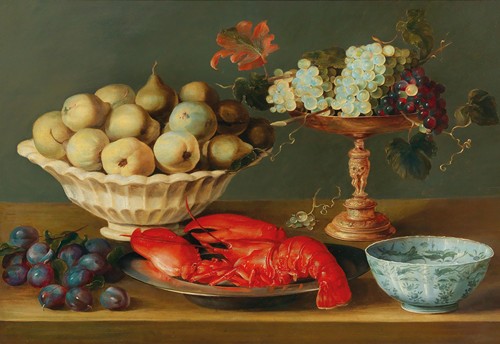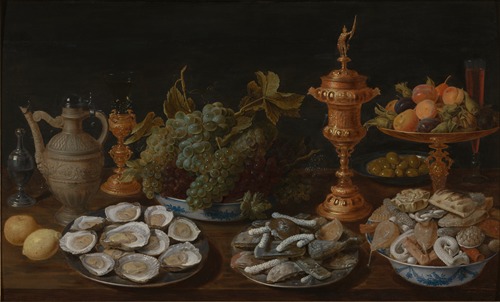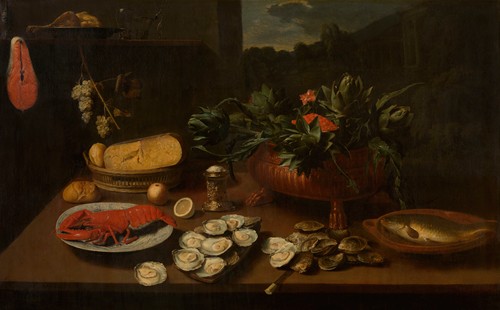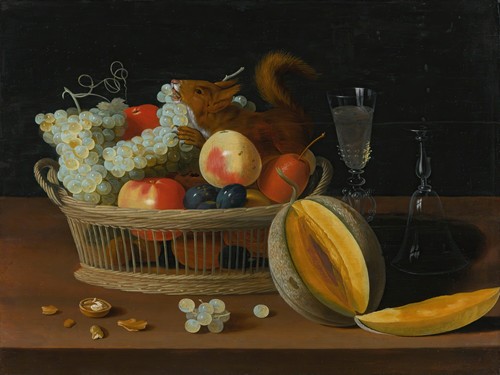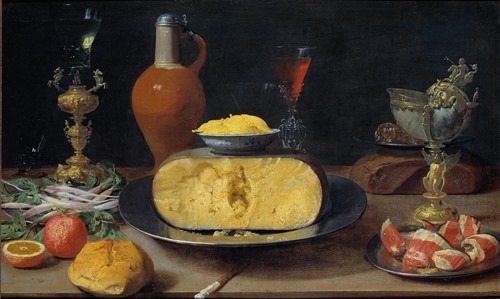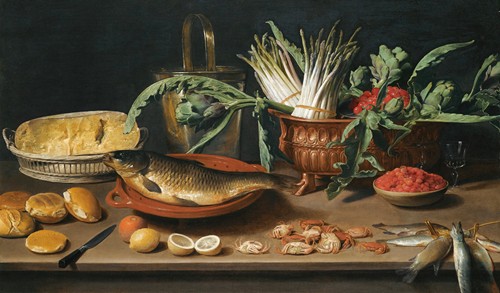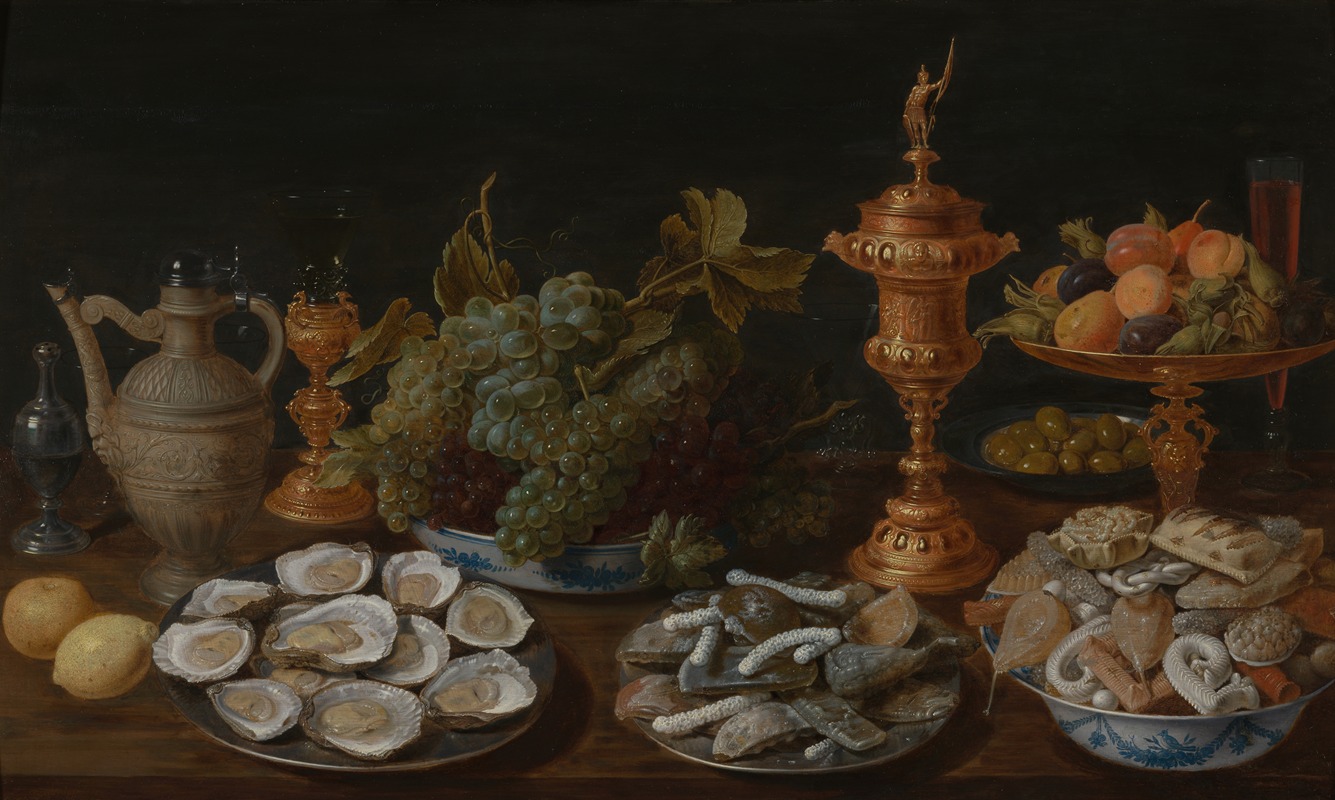
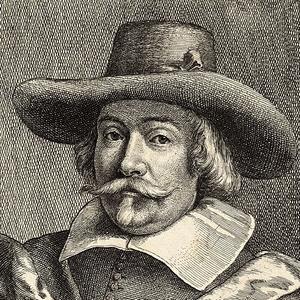
Jacob Foppens van Es, Jacob Fopsen van Es or Jacob van Es was a Flemish Baroque painter who was known for his still lifes mainly of food and occasionally flower paintings. He collaborated with other artists on garland paintings. Together with Osias Beert and Clara Peeters, he was one of the leading representatives of the first generation in Flemish still-life painting.
Biographical data about Jacob Foppens van Es' life are scarce. The inscription on a portrait of Foppens van Es engraved by Wenceslaus Hollar after a painting by Joannes Meyssens states that he was born in Antwerp. In 1617 he became a master of the Antwerp Guild of St. Luke. The fact that he was not registered as a pupil with the Guild before becoming a master, indicates that he likely trained outside Antwerp.
At the time of his registration as a master in Antwerp, he was already married to Joanna Claessens with whom he had a son called Nicolaas. Nicolaas became a master of the Guild in 1648. Jacob Foppens van Es and his wife had three more sons and three daughters.
His success as an artist is testified by evidence that works of his were recorded in many 17th century Antwerp collections. Even the inventory of the leading Flemish Baroque painter Peter Paul Rubens included two of his works. Further proof of his success is that his portrait made by Joannes Meyssens and engraved by Wenceslaus Hollar was included in the collection of artist portraits entitled Images de Divers Hommes Despirit Sublime qui par leur art et science debvrovent vivre eternellement et des quels la louange et renomée facit estonner le monde, published in Antwerp in 1649, with the following text:
Jacob Foppens van Es enjoyed an elevated status among and became close friends with Antwerp's leading artists such as Jacob Jordaens, Cornelis Schut and Deodat del Monte who were also godfathers to his children. He was active in Antwerp for 50 years. His pupils included Jacob Gillis in 1621 and Jan van Tienen in 1623.
He was buried in Antwerp on 11 March 1666.

